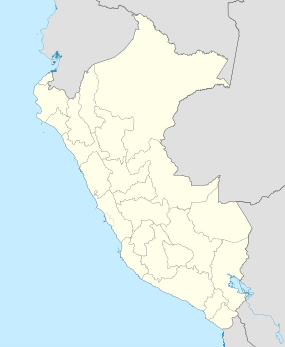Pikillaqta

View of a Pikillaqta sector
|
|
| Location | Quispicanchi Province, Cusco Region, Peru |
|---|---|
| Region | Andes |
| Coordinates | 13°37′00″S 71°42′53″W / 13.61667°S 71.71472°WCoordinates: 13°37′00″S 71°42′53″W / 13.61667°S 71.71472°W |
| Type | Settlement |
| Area | 34.208 km2 (13.208 sq mi) |
| History | |
| Founded | 500 |
| Abandoned | 1200 |
| Periods | Middle Horizon |
| Cultures | Wari culture |
Pikillaqta (Spanish: Piquillacta; Quechua piki flea, llaqta a place (village, town, community, country, nation), "flea place", also spelled Piki Llacta, Pikillacta, Piquillacta, Piquillaqta) is a large Wari culture archaeological site 20 kilometres (12 mi) east of Cusco in the Quispicanchi Province.
Pikillaqta is a village of the Wari people. Wari was the center village and other cities like Pikillaqta were influenced from it. The Wari also inhabited many other sites around the area. The site was occupied from about 550 to 1100AD. Its main use was for ceremonies and the site was not complete when it was abandoned.
The Pikillaqta site is located in low ridges in the eastern Valley of Cuzco. (McEwan 2005:29) The area is hilly with no rivers, but small lakes are located near the city. The area is grassy, rocky, and sandy where the buildings were built. The site is 3,250 meters above sea level and is in the Lucre Basin. The climate in the area of Pikillaqta is cold and dry. Mid April through October is the dry season. November starts the wet season and the weather is milder and that goes until mid April. The average temperature high is in the 60’s and the average temperature low is in the 30’s and 40’s year round in the Valley of Cusco. The rainfall averages 11.5 inches a month in the wet season and 4.2 inches a month in the dry season.
Luis Valcarcel discovered the site of Pikillaqta in 1927. (McEwan 2005:20) Extensive research was not done, Valcarcel just focused on the findings of two green-stoned figurines and his findings were not published until years later. Emilio Harth-Terre was next and published the ground plans of the site in 1959 but did not excavate. William Sanders looked at the surface remains of the architecture in the 1960s and split the site into more detailed proportions. He searched two buildings and only found a few artifacts. Mary Glowacki studied the site for ceramics in 1996. The biggest and most in depth research however was done by Gordon McEwan who excavated the site in 1978-79, 1981–82, and 1989–90. This is when the bulk of the material and questions about the site were finally being answered. In the 1989-90 excavation extensive research was done on the architecture and on trash middens. McEwan divided site into 4 sectors to research them more easily.
Maize was found in one of the excavations done by McEwan along with 20 well conserved beans. Maize was an important crop and was farmed by the people of Pikillaqta as a major food source. The Lucre Basin could produce this crop with all the irrigation systems. Maize was important to the Wari and was painted on pottery along with deities and supernaturals. Canals, reservoirs, aqueducts were at Pikillaqta along with terraces and cultivated fields. Pikillaqta economically controlled the area through agriculture. There was a hydraulic network in Pikillaqta that led through canals and agriculture fields to help the people. Water for irrigation was brought in mainly by the rainfall, which leads to the hydraulic system. August through December there was hardly any rain and the artificial irrigation system was used. December through January there was plenty of rain and artificial irrigation was not used much. May through June was the harvest season and irrigation was used when it was needed. Canals were built of stone and were connected to the Lucre River and Chelke stream. There is over 48 thousand meters of canal in the system with canal A and Canal B being the longest and connected to Pikillaqta. Canal A provided water for irrigation at terraces 1, 2, 3, and 4 and was connected to aqueducts. Canal A provided for the most important buildings in the center of Pikillaqta. All these devices aided in crop production and provided the people with water. In one unit of the trash middens two grinding stones were found and this was a rare find because of the scarce ground artifacts found at the site. This showed food was ground and prepared with grinding stones and they must have been around to help with food preparation.
...
Wikipedia

